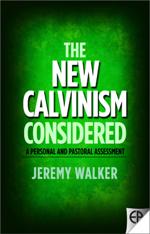Murray on expository preaching
A simple and conversational yet forceful delivery commands both respect and response. Enthusiasm inspires. Logic is convincing, the illogical confusing. As preachers let us have a heart. Let us stop wearying our audiences. Let us make our preaching so absorbingly interesting that even the children would rather listen to us than draw pictures and will thus put to shame their paper-and-pencil supplying parents. But we may as well make up our minds that an absolute prerequisite of such preaching is the most painstaking preparation.
With this challenging quote from R. B. Kuiper, Iain Murray sums up another provocative article in the Banner of Truth Magazine. What with Stuart Olyott’s toothsome contribution on mediate regeneration last month (which stirred up plenty of debate, although I think its central thrust was both accurate and helpful), it looks like the Banner magazine may be rediscovering its bite.
Murray’s argument is not for the abandonment of ‘expository preaching’ (by which he means systematic, consecutive exposition of a book or passage of Scripture), but a warning to take account of its weaknesses compared with what might be called the ‘topical’ or ‘textual’ sermon.
Of course, there is a danger in such terms. Is a topical sermon expository? Certainly it ought to be in the basic sense of an opening up of a given portion of the Word of God. Consider Spurgeon, for example. While Spurgeon is rarely held up as a model exegete, you can read almost any one of Spurgeon’s sermons and you will find a very thorough grasp of its context and meaning lying behind the form that he gives it. In that sense, Spurgeon is thoroughly expository. At the same time, Spurgeon knew himself, and was confident that both he and any congregation to which he preached would be bored to tears within weeks if he began to preach a consecutive expository series: his genius lay in another direction. The preacher who would be a textual sermoniser must know his Bible and be willing and able to understand and, if necessary, situate the verse in its immediate and wider context.
Another consideration with the method Murray advocates is the need for wisdom and courage. The expository series often hits issues that might not otherwise be addressed. In the kindness of God, these are often particularly apposite. Gossip or anger becomes a problem just as we reach James 3; financial commitment is fading as we arrive at 2 Corinthians 8; a legal spirit is cut down in working through Galatians; weak love for the brethren is addressed by John’s first epistle. At the same time, there may be matters that need to be addressed but are not (or are not addressed well) because the passage in hand does not immediately deal with them. Perhaps the saints need to be stirred up, reminded of their primary commitments, encouraged to preach the gospel to the unconverted, to minister to the poor, to address particular sins of faith or life. If the preacher sets out to hit those notes he can be accused of harping on the same tune, riding a hobbyhorse, or targeting particular people. Thus the preacher who would regularly preach the topical sermon must be wise to identify the particular needs that need to be addressed and how and when they should be addressed, spiritually sensitive to the work of the Spirit in his own heart and in the life of the church he serves, and courageous to hit the targets that need to be hit without a sinful regard for the opinions of men.
Anyway, Murray identifies disadvantages of the ‘expository’ method under five headings:
- Know your gifts – different men have different capacities for different kinds of work.
- What is preaching? – it is more than an agency of instruction: it must also be an agency of ignition, striking, awakening and rousing men and women.
- Sermon or lecture? – understanding different purposes and functions of different approaches to sermons.
- What helps the hearer most is best – what are the needs of the particular people before the preacher? Does a running commentary result from the expository method? If so, is that preaching, and/or is that of most benefit to believers and unbelievers? Not all preachers are able to combine the expository and textual elements as could, say, Lloyd-Jones.
- The best ‘fit’ for evangelistic preaching – bringing particular truths to bear on the souls of the unconverted with a prayerful view to their awakening is often best served by ‘topical’ or ‘textual’ sermons. Again, Spurgeon used to refer to those passages and verses that seemed to have been designed by God for the specific purpose of bringing in his elect, without denying the power of God to work his saving purposes from any part of the truth.
I find myself in substantial agreement with Mr Murray on this, and hope that his exhortation to consider the advantages and disadvantages of various methods of public ministry, together with an honest assessment of a preacher’s own graces and gifts, will help me to pursue the right path, and churches to recover a vibrant and pointed pulpit ministry.
Written by Jeremy Walker
Friday 22 January 2010 at 12:14
Posted in Pastoral theology
Tagged with Banner of Truth, expository preaching, Iain Murray, preaching, R. B. Kuiper, Sermons, textual preaching, topical preaching
4 Responses
Subscribe to comments with RSS.


















[…] passage, or book of Scripture, week by week). Unfortunately the article is not online, but you can read a summary here. Iain is right to warn of the dangers, but as the letter below (which I’ve just sent to […]
The case for expository preaching :: 4:14 evangelical christian theology blog
Friday 22 January 2010 at 14:57
I agree. Normally the Banner is just a safe decent read – this month and last it was actually gripping!
cath
Saturday 23 January 2010 at 14:44
Jeremy, a good summary of the two items — and BANNER’s great value. I started reading in seminary (late 1980’s) and have been devoted, and blessed, each month since then. db
(Also enjoy your book reviews; keep reading!).
Pastor Dave Bissett
Monday 25 January 2010 at 17:34
My Feb. issue of the Banner has just arrived. Some comments on Iain’s piece which must be seen as a defence of Olyott.
Mr Murray gives us five structured disadvantages of his new idea of expository preaching but omits a similar at-length structured account of its advantages. Indeed, his woolly definition of expository preaching refers little to ‘expository’ and less to ‘preaching’. He leaves out a, the purpose and use of God’s mediation through, in and by the expounded Word; b. the application of the exposition of Scripture to the needs of the congregation; and c. the evangelical appeal to the sinner by means of the Word, which were intrinsic parts of the old Banner’s expository preaching. However, where no Scripture is expounded, none can be applied. We are also told that expository works have become ‘popular’ as if this were condemnation enough. Has the Banner forgotten that they have delighted the bulk of their former readers with such treasured works for decades? We note however, that Murray is mistaken in his views of traditional expository preaching. He is condemning what he calls ‘running commentaries’, in favour of short texts. Expository preaching is not a question of length but of the methods used in expounding the Scriptures. Murray is in fact recommending the methods of the 13 cent. mediaeval church. They used a few words of Scripture as a starter before developing their three-point narratives.
Murray’s starts by claiming that many preachers cannot preach in an expository way. This is no reason for condemning expository preaching. Hirelings who are not able to expound the Word are not preachers. Nor should they be pastors. This has nothing to do with expository preaching but with calling pastors who cannot prepare sermons and preach. Murray’s second point is that covering a whole book or even the whole Bible must be challenged as it becomes an end in itself. ‘True preaching’, he tells us, ‘needs to ignite an on-going process’. Yet he recommends having a different theme for each sermon. Where is the on-going process here? One might call Murray’s method the hit-and-run process. Luther, after summing up his exposition, usually prepared his hearers for the next with a 16th century version of ‘wait for the next exciting instalment’ and when that came round, he referred to the contents of the last sermon briefly before going on to explain how he was going to structure the next, emphasising the ‘on-going process’ of following God’s Word. Murray’s third point that expositional preaching is merely lecturing is also highly questionable. Here, he claims that John Brown of Broughton and Dr Martyn Lloyd-Jones were of the lecturing rather than preaching kind. Murray’s fourth point is that expository preaching has a bad track-record because of the ‘tyros’ in the ministry. Again we ask what new recruits who have never seen battle to do with the office of a preacher? Murray is once more complaining about poor preachers rather than demonstrating that expository preaching is a second best.
Murray’s fifth point that expository preaching is not evangelical shows how he has misunderstood the term. In mature, well-skilled, God-blessed evangelical hands expository preaching is evangelical but obviously not in the hands of Murray’s ‘tyros’ who scorn the idea of good, honest work and have no business in the ministry. Yet Murray still demands, like us all, ‘messages that will move congregations and even sway communities’. The old Lutherans expounded the Word for hours at a time and I have the written testimonies of those who said they were like magnetic minutes. Furthermore, good expository preaching knocks down self and builds up faith. Murray’s bickering merely knocks down. We agree with Murray’s longing for better preaching but he does not bother to give us it. As Olyott uses a fictive caricature of Luther on which to base a most badly thought-out system, Murray, in his defence, merely draws a caricature of Bible exposition without giving us a better alternative.
George M. Ella
Saturday 30 January 2010 at 15:06